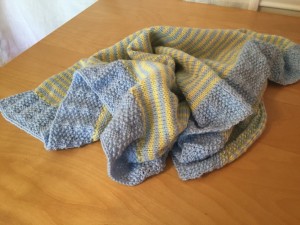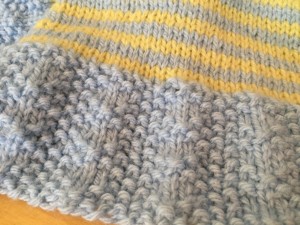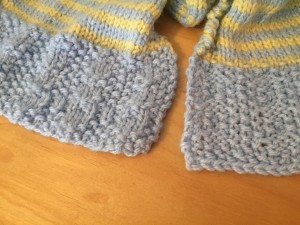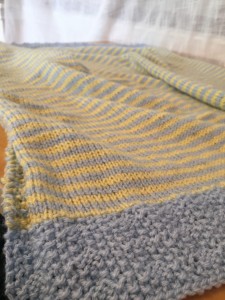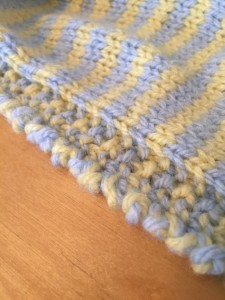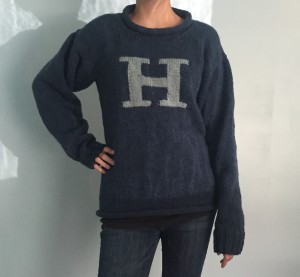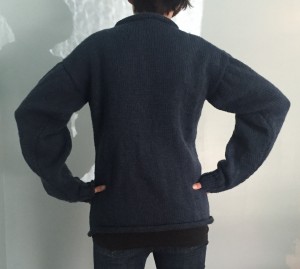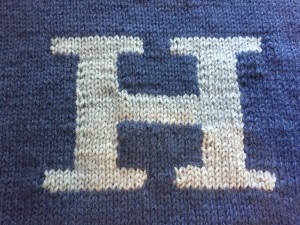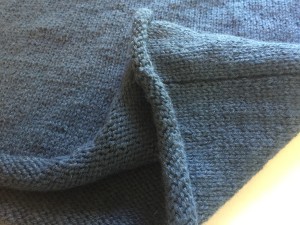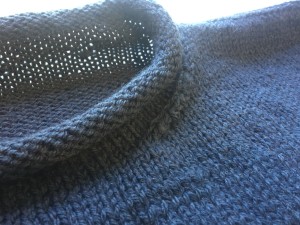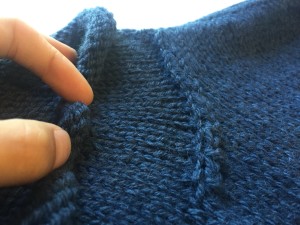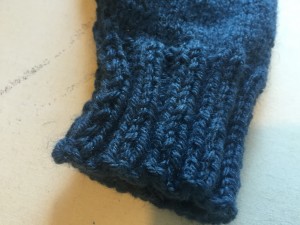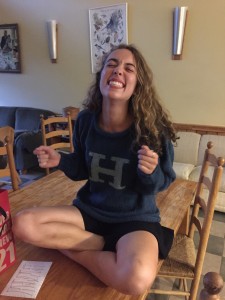The following post was originally written and published Summer 2015. It was temporarily removed from this site during a revamp, and can now be found in full, unaltered, below.
A friend of mine recently gave birth to an adorable baby boy and I wanted to give her a hand-knitted gift. In hindsight, I should have gone with a hat. But instead I chose to make a baby blanket, and it’s a good thing I started months in advance because that thing took forever! The blanket turned out really well if I do say so myself, and I’d like to share the pattern and some tips based on my experience.
I received a Simple Knits: Blankets and Throws pattern booklet by Claire Crompton for Christmas 2014. Here’s the link to purchase the booklet on Amazon. There are several other interesting patterns that I’ll attempt when I’m retired or in limbo or otherwise have tons of time to devote to a project. The booklet is definitely worth the price if you enjoy sizable projects and are past being a “beginning knitter,” even though this particular pattern is at the beginner level.
The blanket is worked in two colors, beginning with a textured border in color A, followed by stripes of alternating colors, and wrapping up with a matching border in color A at the end. Any two colors of light weight baby yarn will do. Just head for the pastel section of the yarn aisle! You will need relatively small sized needles that are at least a foot long (you’ll be working with 157 stitches. Yes, you read that correctly), and I highly recommend wooden needles so that if your work gets tugged you are less likely to lose a substantial amount of stitches. As far as needle size, that depends on how thick/loose you want your finished product. Test a swatch in stockinette stitch.
THE BORDER
The pattern for the textured border as provided by the book is interesting and turns out nicely, but I think any border pattern of your own creation would work just as well. The pattern calls for frequent alternation between purling and knitting, which I suspect isn’t so tiring if you’re a continental-style knitter, but for me, the p1 k1 gig gets old real fast. To do it over again, I would alter the pattern to include longer stretches of either knitting or purling.
It should be noted that by following the pattern exactly, the top and bottom borders are opposites when viewed from the same face of the blanket. See the picture? The entire blanket is face up. I noticed this a few rows in, but to be honest I was so mentally done with this project that I decided to just carry on without redoing those 785 stitches. If you create your own border design without face-specific details, you won’t have this problem. But if you follow the booklet and this discontinuity bothers you, just add an extra p1, k1 row before starting in on the diamonds, or reverse the instructions (purl when told to knit, and vice versa).
THE STRIPES
Oh man, the stripes. Simple enough, but never-ending.
The pattern calls for a seed stitch border along the vertical edges of the blanket, worked in the stripes. This border helped to hide that I was using dual strands on one edge so that I could carry the previous color up the work instead of tying off after each stripe. Can you imagine having to sew in all those ends?? No thanks!
The pattern required more stripes than I cared to knit, so I moved on to the final border with about 2 inches worth of stripes to go. I did this because the baby had been born and the darn blanket wasn’t going to be a square anyway, so what did it matter if my blanket was a slightly different rectangle than the pattern was designed to produce? I caution against lengthening the pattern if you want to maintain your sanity (unless you’re a seasoned blanket-knitter, in which case it’s too late for you!), but really you can tweak the dimensions as much as you want and still end up with a beautiful blanket.
THE END
Well believe it or not that’s all I have to say about that. The blanket was easy to make thanks to a simple pattern. There’s lots of potential for variation, which is awesome. Or you can rigidly adhere to the well-constructed pattern.
